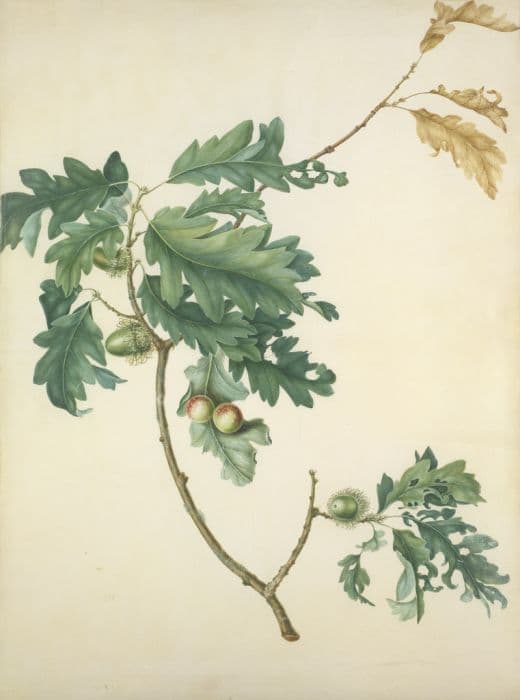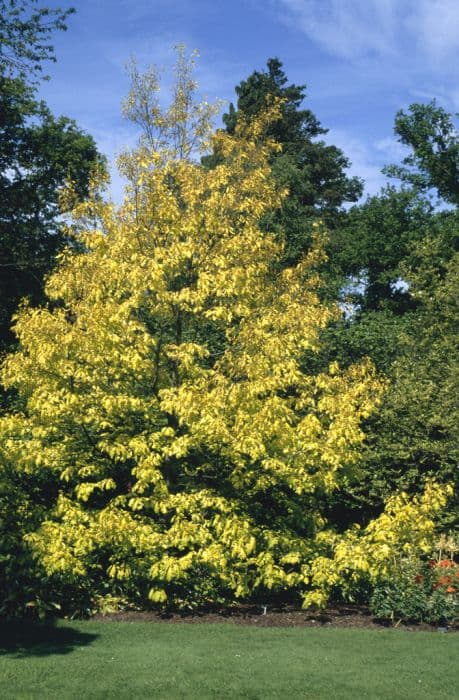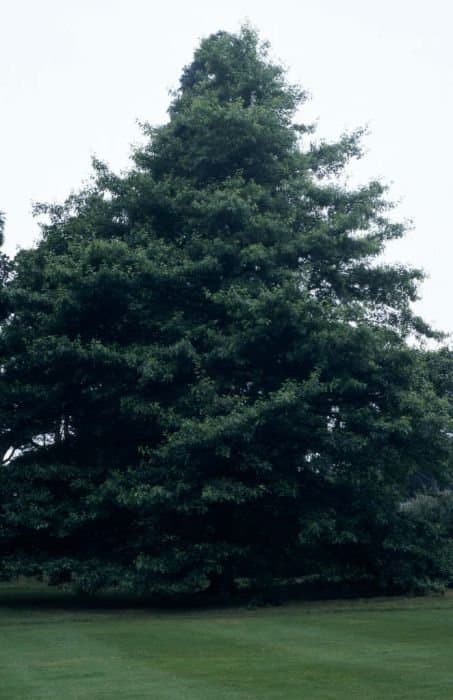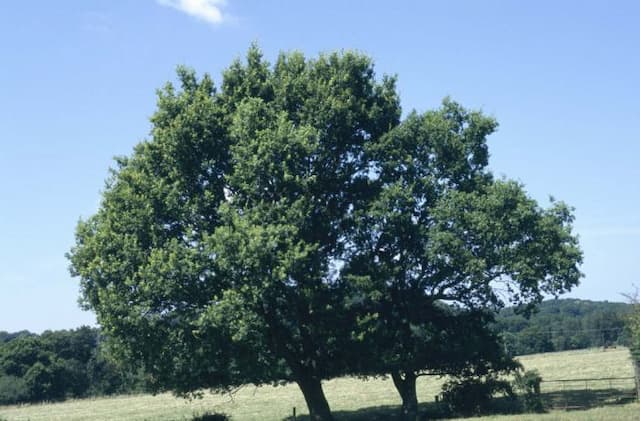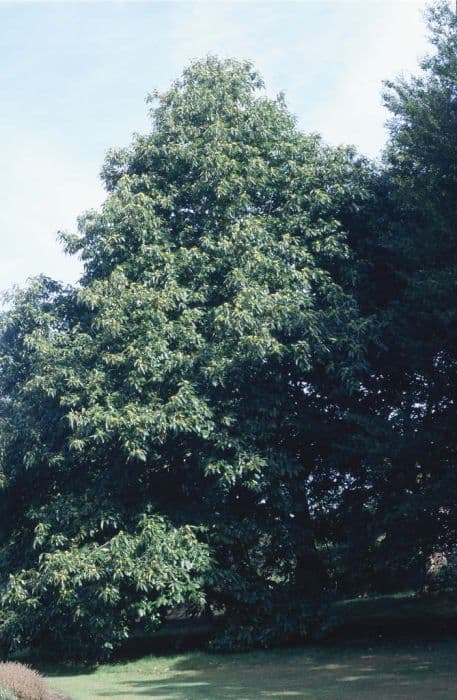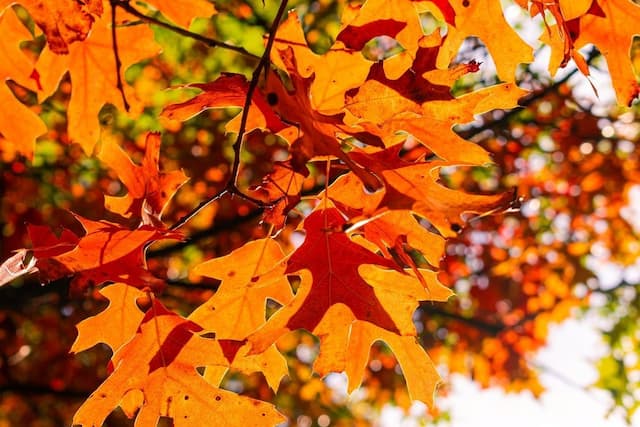Pin oak Quercus palustris



ABOUT
Pin oak or swamp oak, is a deciduous tree that belongs to the white oak group of the oak family (Fagaceae).
The tree can grow up to 40 feet tall and has a broad, spreading crown. The bark is gray-brown, and the branches have a distinctive pinched appearance, giving the tree its common name. The leaves are simple, lobed, and glossy green on top, and pale green beneath. The lobes are usually bristle-tipped, and the leaf base is typically U-shaped. The acorns are small and have a shallow, saucer-like cap.
In the fall, the leaves turn a rich, deep red to brown color. The pin oak is a relatively slow-growing tree and can live for up to 200 years. The tree prefers moist, well-drained soils and is often found growing near water sources such as swamps, streams, and rivers.
About this plant
 Names
NamesFamily
Fagaceae
Synonyms
Swamp Spanish oak, Swamp oak, Water oak
Common names
Quercus palustris var. heterophylla, Quercus rubra var. dissecta, Quercus rubra var. palustris
 Toxicity
ToxicityTo humans
Pin oak is not known to be toxic to humans.
The acorns of the tree are edible for humans after being processed, and the tree is not known to have any toxic compounds.
However, the leaves, bark, and acorns of the tree do contain small amounts of tannins and other compounds that can cause stomach upset if ingested in large quantities.To pets
Quercus palustris is not known to be highly toxic to animals, but the leaves, bark, and acorns of the tree do contain small amounts of tannins and other compounds that can cause stomach upset if ingested in large quantities.
Additionally, the tree's acorns may be toxic to some animals when consumed in large quantities. It is best to consult with an expert before feeding acorns to animals.
 Characteristics
CharacteristicsLife cycle
Perennials
Foliage type
Deciduous
Color of leaves
Green and yellow in the fall
Flower color
Yellow, greenish
Height
Up to 40 feet
Spread
Up to 40 feet
Plant type
Tree
Hardiness zones
4
Native area
North America
Benefits
 General Benefits
General BenefitsQuercus palustris is a beautiful tree that can add visual interest to any landscape. It has a broad, spreading crown, and its leaves turn a rich red or brown color in the fall;
Pin oak is a large tree that can provide shade to a wide area. It's a great option for planting in a large yard or park;
The plant is a tree that helps to prevent soil erosion by stabilizing the soil with its roots;
The tree provides food and habitat for a wide range of wildlife species, including birds, squirrels, deer, and other mammals. Medical Properties
Medical PropertiesPin oak can be used to treat skin conditions such as eczema, psoriasis, and acne;
It has anti-inflammatory and antiseptic properties, which helps reduce swelling and soothe irritated skin;
Pin oak can also be used as an astringent and to treat respiratory ailments such as asthma, bronchitis, and coughs;
Its high tannin content has been found to be effective in treating diarrhea and dysentery;
Pin oak bark is also used as a diuretic, which helps to flush out toxins from the body;
It can also be used to treat urinary tract infections and kidney stones.
However, it's important to note that the medicinal properties of Quercus palustris have not been extensively studied and there is not enough scientific evidence to support their effectiveness. It's also important to keep in mind that self-medicating with plants can be dangerous, and it's always best to consult with a healthcare professional before using any plant for medicinal purposes. Air-purifying Qualities
Air-purifying QualitiesOak is also known for its air purifying qualities. Its porous nature helps to absorb pollutants from the air, such as formaldehyde, benzene, and xylene, and helps to reduce the levels of these pollutants in the environment.
Oak is also known for its antimicrobial properties, which help to reduce the spread of bacteria and viruses in the air. Other Uses
Other UsesPin oak is a hardwood tree and its wood is dense and heavy, which makes it a good fuel for fires. It burns hot and burns for a long time;
The bark of pin oak is a good source of tannins, which can be used to tan leather and other animal hides;
The acorns of pin oak contain a tannin-rich liquid that can be used to make a yellow dye;
Pin oak is a popular tree for landscaping due to its beautiful fall color and its tolerance to a variety of growing conditions;
The pin oak tree is also used for bonsai due to its attractive shape and adaptability;
The wood of pin oak is hard, durable, and straight-grained, making it ideal for furniture and flooring.
Interesting Facts
 Feng Shui
Feng ShuiPin oak is considered to be a symbol of endurance and stability in Feng Shui.
It's believed that having a Pin oak tree in the yard or near the home can bring balance and harmony to the environment. Placing a Pin oak tree in the east sector of your home or yard can bring in good health and family harmony. Zodiac Sign Compitability
Zodiac Sign CompitabilityOak trees in general are often associated with the zodiac sign of Leo due to their strength, endurance, and regal presence.
 Plant Symbolism
Plant SymbolismPin oak has different meanings and symbols across different cultures.
In general, it is seen as a symbol of stability, endurance, and longevity.
It is also considered a symbol of regeneration, victory and strength.
 Water
WaterQuercus palustris is a tree that prefers moist soil, but it does not tolerate standing water.
It is best to water the tree deeply and infrequently to encourage deep root growth. During hot and dry weather, the tree may need to be watered once a week. In general, it is recommended to check the soil moisture level and water the tree when the top 2 inches of soil are dry. Light
LightPin oak is a tree that prefers full sun to partial shade.
It can tolerate a wide range of light conditions, but it will grow best in full sun. Temperature
TemperatureIt is tolerant of a wide range of temperatures, but it prefers cool to moderate temperatures between 40-70°F.
The tree can tolerate cold temperatures as low as -20°F, but it is not tolerant of hot and dry conditions. Pruning
PruningPruning the Pin oak tree should be done when the tree is dormant in late winter or early spring. To begin, remove any dead, diseased, or damaged branches. Also, remove any branches that are crossing, rubbing, or growing into the center of the tree. Finally, reduce the canopy by removing branches that are too long or too close together. Make sure all cuts are clean and even. When pruning, keep the natural shape of the tree in mind and avoid making drastic changes.
 Cleaning
CleaningNot needed
 Soil
SoilQuercus palustris is a tree that prefers moist, well-drained soil.
It will grow best in a soil that is high in organic matter and has a pH between 5.5 and 7.0.
The tree can tolerate a wide range of soil types, but it prefers clay, loam, and sandy soils. Repotting
RepottingThis is an outdoor tree so transplanting is not needed.
 Humidity & Misting
Humidity & MistingQuercus palustris is a tree that prefers moderate humidity levels.
It can tolerate dry conditions, but it prefers a moderate level of humidity. The tree can be sensitive to high humidity levels, so it's important to keep the leaves dry and avoid overhead watering. Suitable locations
Suitable locationsIndoor
Not growing
Outdoor
Pin oak is a tree that is typically grown outdoors.
It is best to plant the tree in the fall or spring, in a location that receives full sun to partial shade. The tree prefers moist, well-drained soil that is high in organic matter and has a pH between 5.5 and 7.0.
It is important to keep the soil moist but not waterlogged, and to avoid over-fertilizing the tree.
The tree can tolerate a wide range of temperatures, but it prefers cool to moderate temperatures between 40-70°F.Hardiness zone
USDA 5 - 10
 Life cycle
Life cyclePin oak is a large deciduous tree that is native to North America, found primarily in the eastern and central United States. The tree has a pyramidal shape when young, and grows to a height of 40 feet.
Pin o lifw starts with seed germination. Seeds need moist conditions to germinate. They should be planted in an area with full sun and well-drained soil. The seeds should be planted 1 to 2 inches deep in the soil and kept moist.
During the first few years after germination, Pin oak seedlings are vulnerable to disease, insects, and other environmental factors. They need plenty of sunlight and should be watered regularly.
Pin oak saplings are more tolerant of environmental factors and can tolerate shade. They should be watered regularly and fertilized annually to ensure optimal growth.
These trees reach maturity at around 15 to 20 years of age. They grow best in full sun, but can tolerate some shade. They should be pruned every few years to maintain their shape.
Pin oak trees can live for up to 200 years, but may start to decline after about 100 years of age. This decline is usually due to environmental factors and may include disease, insect infestation, or drought.
At the end of its life cycle, a pin oak tree will die and its wood will be used for lumber or firewood. Propogation
PropogationPropogation time
Spring - fall
By ACORNS:
Acorns are the most common way of propagating pin oaks, as they are relatively easy to obtain. Collect acorns in the fall when they have fully ripened and drop from the tree. Plant the acorns in nutrient-rich soil in an area with full sun.
By CUTTINGS:
Take semi-hardwood cuttings from the tips of pin oak branches in the summer. Place the cuttings in a rooting hormone and plant them in potting soil. Keep the cuttings moist and in a warm, bright area until they have taken root and new growth appears, then transplant them to their final location.
By GRAFTING:
Grafting is a more advanced technique for propagating pin oaks. It requires matching the scion of the desired pin oak variety with a compatible rootstock. The connection between the scion and rootstock is then secured with tape or grafting wax and left to root. Once the graft has taken, it can be transplanted to its final location.
 Pests
PestsScale insects, Oak leaf roller, Gypsy moth
 Diseases
DiseasesPowdery mildew, Leaf spot, Oak wilt
